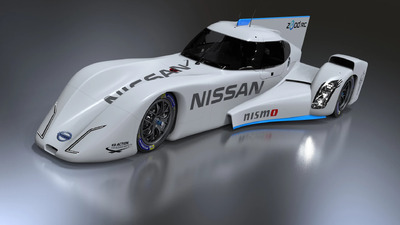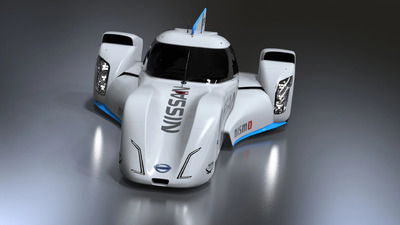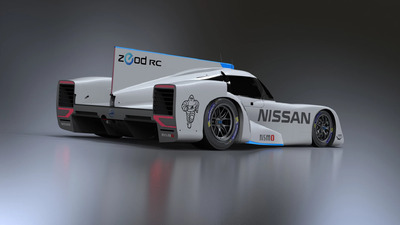Kerb Weight
N/A


Kerb Weight
N/A

Engine
1.5-litre Nissan DGT-R inline-three, turbocharged

Top Speed
N/A

Acceleration
N/A

Horsepower
c.400 bhp (298 kW)

Transmission
N/A

Torque
280 Ib/ft (380 Nm)

Production
2

Year
N/A
Following the ambition of the Ben Bowlby-penned DeltaWing, Nissan sought to use some of the lessons learnt in an experimental electric testbed. However, battery technology capable of running a 24-hour endurance race wasn't (and still isn't) feasible, so the team naturally turned to hybrid power.
The design was once again by Bowlby, with responsibility for construction going to the RML Group, and the Portuguese firm Adess AG building the chassis. The car, dubbed the ZEOD (Zero Emission On Demand) RC, was fitted with a 1.5-litre turbocharged three-cylinder engine, producing 400 bhp and mated to twin 110kw electric motors.
The ZEOD was publicly unveiled in October 2013 and performed demonstration runs during the Fuji Speedway round of the FIA WEC. Its first (and only) race came at the following year's 24 Heures du Mans, where it set a qualifying lap of 3:50:18, comparable to contemporary GTE cars. The approach was to run 11 or 12 laps on petrol power, and then switch to full-electric for a further lap, with the goal being to complete a full lap on solo EV power.
This was achieved, but race was cut short with a transmission failure after just 24 minutes.
The ZEOD had a very rough run, marked by unrealistic expectations, tight deadlines, and new, unproven technology. This was only further soured when DeltaWing sued Nissan for theft, fraud and breach of contracts. This was later settled out of court.
(In collaboration with @Car Historian)
Empty List
Empty List
Empty List
LIKES
SPOTTED
DREAM GARAGE
Empty List
Empty List








By clicking “Accept All Cookies”, you consent to the storage of cookies on your device to improve website navigation, analyze website usage and assist in our marketing efforts.